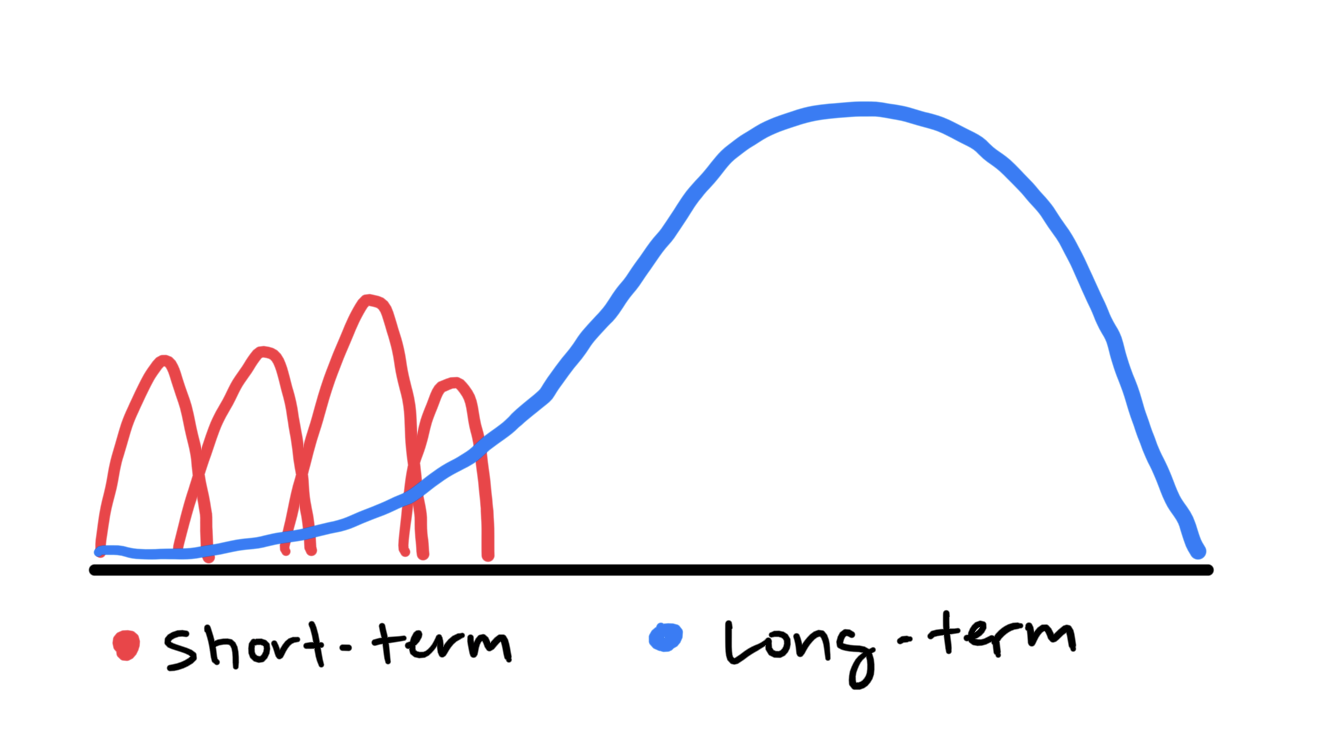Dual-Track Marketing
For quite some time, I've been trying to figure out how to formalize my ideas on a marketing framework that I used at Sprout and have seen be successful with other companies since.
While I'm not in love with the name, I've landed on Dual-Track Marketing.
A big reason for this is that I discovered dual-track agile development and found a lot of similarities. This concept originally comes from the Agile Manifesto, and productboard.com describes it as:
Dual-track agile is an agile methodology that contains two separate tracks. There’s the “Discovery” track, and the “Delivery” track.
The discovery track focuses on producing, testing, and validating product ideas. The delivery track works on turning those ideas into an actual product.
In Dual-Track Marketing, the same idea is true.
However, there is flexibility in what the two tracks are. Here are several examples:
The go-to-market track focuses on generating demand and acquiring customers. The brand track focuses on thought leadership, product awareness & PR.
The paid track focuses on acquiring customers with a set budget and acceptable ROI. The non-paid track focuses on building up organic rankings, social followings, and community engagement.
The steady track focuses on tried-and-true ad campaigns that consistently generate efficient revenue. The experimental track focuses on testing new channels and formats to discover new areas of growth.
The blog track focuses on creating consistent and valuable, search-friendly content each month. The creative track focuses on creating one-of-a-kind data reports, event experiences, and thought leadership content.
The low-impact track focuses on smaller tests to improve landing page conversions and click-thru rates. The high-impact track focuses on more significant growth experiments and tests.
I think you get the point by now. 🙂
Short-Term vs. Long-Term
If you were to force me to distill these concepts and examples into a single concept, it would be short-term vs. long-term.
In each one, some things are needed now to get results and keep things moving forward, and some things need to be done in service of the future.

Short-term activities should lead to quicker and more consistent small wins (though sometimes they can compound) while long-term activities take longer to build or prove out, but the impact is typically more significant when they do.
Mutually Dependent
The interesting thing about Dual-Track Marketing is that each track is dependent on the other in nearly every example.
Paid channels may work well now, but costs and competition will grow over time. The non-paid channels will grow over time and keep the blended CAC in a healthy and scalable range. Conversely, most companies would struggle if they only invested in non-paid channels because they can't wait that long for those channels to develop.
I'll spare you more examples of how that plays out, but here's the gist.
Too much short-term will hurt down the road. Too much long-term will hurt now, and there may not even be a 'down the road.' It requires a balance, and even what balance means will evolve as the company grows.
Implementing Dual-Track
If this sounds new and you aren't doing it today, start by asking these questions.
- Are we doing enough now to hit our growth goals?
- Are we doing anything to find new opportunities or build towards the future?
- If we keep doing what we're doing for marketing for the next two years, will we be in a better place or not?
If the answer to #1 is no, you have to start there. If you are hitting your growth goals, you can adjust your marketing accordingly based on #2 & #3.
This may be as simple as carving out 10% of your ad budget for testing new channels, investing in non-paid channels, or making time for your team to work on bigger tests or brand-building activities.
If you'd like to talk about this as it relates to your company specifically, contact me.
